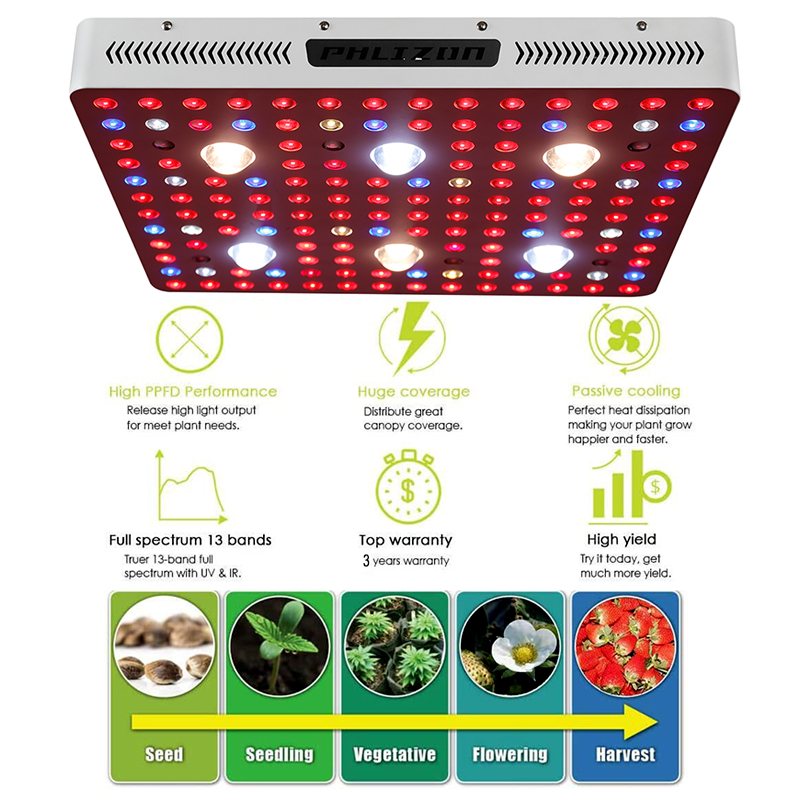Top 3 Reasons to Consider RED/BLUE Led Grow Lights

LED Grow Lights have been a very hot topic for more than a decade now and as with any (relatively) new technology, the first decade of LED grow lights has seen massive changes and improvements. From the amount of companies selling LED grow lights to the technology powering what they are selling, we have all heard or read why each company feels their technology is the best. In recent months, that conversation has included topics ranging from fixture design to cooling to efficiency (umol/j) to intensity (umol/m2/s) to color spectrum (nm) (all of which are directly related when it comes to fixture performance). I dare say we have probably heard and seen everything that we are going to see.
1. THE GREENHOUSE
I am still a believer in the commercial greenhouse and I am still a believer in the sun. Most commercial greenhouse growers who are investing in light are only investing in supplemental light. This means that for much of the year they are not using their grow lights or they are only using them for a short period of the day. They are instead relying on the sun to provide most of the energy for the plants. This also means that the plants are getting full-spectrum light from the sun (or at least what spectrum is able to pass through the glazing) and even when the grower is using their grow lights the sun is normally contributing a significant amount to the percentage of DLI (Daily Light Integral) the plants receive each month. Based on the knowledge we (as an industry) have today plus the equipment we have commercial access to, a well designed greenhouse with supplemental electric light is a proven and economic tool for year round plant production in a wide variety of climates and geographies.
Image shows what greenhouse light looks like when there is natural sunlight and high blue/red LEDs on at the same time.
This is not to say that I don`t believe in vertical farming. It`s just to say that the greenhouse has been around long enough to be proven to work in a wide variety of conditions. In a follow up article I will discuss how important vertical farming is to the future of different parts of the agricultural process.
2. EFFICIENCY and INTENSITY
My research continues to prove that the most efficient LED grow lights are red and blue. It also shows that those light fixtures with highest output (umols/s) are red/blue led grow lights. Depending on the ratio of red:blue this could mean as much as a 45% savings in electricity for greenhouse lighting depending on what fixtures and type of technology one is comparing. This could also mean about 10% more light per fixture, which means less overall fixtures in the farm. For those growing food crops or ornamental crops, these types of savings can have a big impact depending on where the farm is located and how much the farm is paying for electricity. Efficiency should also be front and center for those growers interested in winning the sustainability discussion. There are plenty of people opposed to controlled environment agriculture. Their main opposition is the energy footprint. And that is a fair argument. That`s why it`s important that we learn to maximize production based on using the most efficient tools.
3. OPERATING COST
If we want to be profitable farmers, now and well into the future, we need to constantly focus on operating cost. This means counting pennies and making the best investment in technology we can based on what we know and what we have access to. Energy efficient equipment often costs more, but if you maximize the operational savings and take advantage of utility rebates, the right equipment/investments will start paying you back in a short period of time. And since red/blue leds are proving to be the most efficient option, it only seems to make sense that we figure out how to adapt our production strategies in order to use this technology.
Again, it`s very important to remember that the only use of supplemental lighting is to increase plant performance. Plants absorb different light colors (light spectrum) at different levels. Science supports the fact that the colors most absorbed by plants in order to promote photosynthesis are red and blue. Meaning the rest of light colors will require a higher light intensity in order to trigger the same photosynthesis levels reached by red and blue LEDs. Photosynthesis is the main process in plants leading growth and development. By using red and blue light you can be sure the money you invest in your light is better used.
So, why would one not invest in red/blue leds? Is it because the greenhouse crop does not grow well under the lights? Not based on my experience. Many of my customers, staff and friends have been growing under red/blue leds for years now. The crops look great and the yields are comparable when light intensities are equal. The best argument I have heard has nothing to do with the crop. It`s that [employees" don`t like it and might be uncomfortable. That is a fair argument. But, in my opinion that is an argument with a very easy work around. Growers should look at strategically placed work lights that are capable of producing bright white light at a lesser cost. These lights will be less efficient, but not need to run as long as the grow lights (because they only need to run when workers are present) and because of that these less effective fixtures will not have a negative impact on the potential efficiency and op ex savings.
More details at amy@phlizon.net whatsapp 008613510161027



